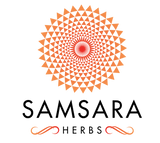Deep dive into herbs | Tick Immune Formula

Lyme disease is caused by an infection from bacteria called Borrelia burgdorferi. It is passed to humans through the bite of infected deer or black-legged ticks. Can natural herbs offer a more effective, gentler option to prescription antibiotics? Read on to learn about the top 11 herbs that can help you manage Lyme disease.
1. Japanese Knotweed
Japanese Knotweed is a great source of resveratrol, an antioxidant-like compound that had been well researched in many studies. It helps protect the brain from inflammation and cellular damage [R1], and eases the joint pain [R2]. Resveratrol also shows the potential to increase longevity, too. [R3]. Resveratrol is one of the key supplements used by Dr. Horowitz, MD, leading expert in Lyme disease who has treated over 12,000 Chronic Lyme disease patients in the last three decades [R4]. Dr Horowitz found resveratrol helpful to relieve pain, fatigue, and brain fog associated with Lyme disease. [R5]
2. Dokudami
Dokudami, medically known as Houttuynia cordata, has a long history of use in traditional Chinese herbal medicine and Ayurveda, being well know for its strong antibacterial and antiviral effects [R6]. Research studies support the anti-inflammatory and antioxidant qualities of this plant, which also shows the ability to disrupt bacterial biofilms. The key active ingredients in dokudami are afzelin, hyperoside, and quercitrin. [R7]
3. Cats Claw
Uncaria tomentosa (commonly known as Cat’s Claw) is native to the tropical jungles of South and Central America. Extracts from this plant were found effective on both active and dormant forms of Borrelia burgdorferi strains, according to research studies. Furthermore, studies found that Cat’s claw also has the ability to reduce and disrupt bacterial biofilm. Best of all, this herb also showed an excellent safety profile. [R8]

4. Gou-Teng
Medically known as Uncaria rhynchophylla, Gou-Teng is officially documented in Chinese pharmacopeia. Based on his herb, Chinese doctors created a drug used for the management of brain and heart conditions [R9]. Researchers confirmed the ability of this herb to protect brain and heart cells from damage, mostly due to its strong anti-inflammatory and antioxidant qualities. [R10] [R11]
5. Andrographis Paniculata
Also known as the “Indian echinacea”, Andrographis paniculata is an herb long used in traditional Chinese medicine and Ayurveda. Lyme disease expert, Dr. Horowitz supports the use of this herb to manage Lyme disease. It has “strong scientific backing in patients with ongoing symptoms and inflammation”, Horowitz says. [R12]
6. Sida Acuta
Used in traditional Indian medicine as a potent herb against malaria, fever and various brain conditions, Sida Acuta was also evaluated in modern studies as well. In one study, a key active ingredient from Sida Acuta was compared with the prescription antibiotic streptomycin. Researchers concluded that this herb as significant antimicrobial effects against multiple bacteria. [R13]
7. Alchornea Cordifolia
Cordifolia is a plant widely used in Africa for a variety of health problems, including infections. Studies found that the key active ingredients phenols, tannins, triterpens, flavonoids, alkaloids, anthraquinones, anthocyanins, saponins and coumarins are mostly responsible for its antimicrobial properties. A recent study found that A. cordifolia is bacteriostatic, which means it stops bacteria from reproducing. [R14]
8. Cryptolepis Sanguinolenta
Cryptolepis sanguinolenta has longstanding traditional use in the treatment of malaria, infectious diarrhea, and respiratory conditions in the West African region. Modern research further suggests that this herb has potent anti-inflammatory and antioxidant qualities, antimicrobial effect against malaria, many bacteria, and fungi as well. It also acts as a pain killer and has anti-anxiety effects. Cryptolepine is the key active ingredient. [R15] [R16]
9. Stevia Leaf
While stevia is mostly known as a natural, low carb sweetener, its extract can also help manage Lyme disease. Based on research studies, Stevia leaf extracts show efficacy against Borrelia burgdorferi. When stevia extract was added to the bacterial culture in lab tests, scientists found that Stevia-treated bacteria showed either no regrowth after 7 days or 10% regrowth of viable cells after 14 days of incubation. Furthermore, stevia also showed the ability to reduce bacterial biofilm. Stevia extract is also safe, even when used in high doses as in the diet. [R17]
10. Sarsaparilla
Sarsaparilla is a tropical plant from the genus Smilax native to South America, Jamaica, and the West Indies. In folk medicine is used to treat arthritis, various skin disease and as a “blood purifier” Sarsaparilla was registered as an herb in the United States Pharmacopoeia to treat syphilis.
The antimicrobial effects of sarsaparilla are documented in modern studies. One study evaluated the activity of over 60 different plant compounds isolated from sarsaparilla, and these compounds were tested against six types of bacteria and one fungus. Researchers found 18 compounds that demonstrated antimicrobial effects against the bacteria and one with antifungal activity. [R18]
11. Black Pepper
Black pepper is more than just a kitchen staple. Black pepper is rich in piperine, a potent antioxidant, and anti-inflammatory compounds. It also protects the brain against degeneration [R19], may help manage pain [R20], and has strong antibacterial and anti-fungal qualities. Piperine works well in combination with prescription antibiotics, as well. [R21]

On an ending note
Our potent tick formulas can support healthy Lyme recovery and detoxification, and are also available in either a powder or capsule form for your convenience.
To read more about our Tick Recovery Formula or Tick Immune Support Formula, check them out in our Chronic Health Collection.
References
R1 | https://www.ncbi.nlm.nih.gov/pmc/articles/PMC4971593/
R2 | https://www.ncbi.nlm.nih.gov/pmc/articles/PMC4030174/
R3 | https://www.ncbi.nlm.nih.gov/pubmed/15254550
R4 | https://www.ncbi.nlm.nih.gov/pmc/articles/PMC4030174/
R5 | https://www.ncbi.nlm.nih.gov/pmc/articles/PMC3351864/
R6 | https://www.ncbi.nlm.nih.gov/pmc/articles/PMC4588085/
R7 | https://www.ncbi.nlm.nih.gov/pmc/articles/PMC5662838/
R8 | https://www.ncbi.nlm.nih.gov/pubmed/28657449
R9 | https://www.ncbi.nlm.nih.gov/pubmed/30858121
R10 | https://www.ncbi.nlm.nih.gov/pubmed/22322985
R11 | https://www.ncbi.nlm.nih.gov/pubmed/28424024
R12 | https://www.ncbi.nlm.nih.gov/pubmed/28676114
R13 | https://www.ncbi.nlm.nih.gov/pubmed/28676114
R14 | https://www.ncbi.nlm.nih.gov/pmc/articles/PMC5661077/
R15 | https://www.mdpi.com/1420-3049/18/5/5265
R16 | https://www.ncbi.nlm.nih.gov/pubmed/21360003
R17 | https://www.ncbi.nlm.nih.gov/pubmed/24388894
R18 | https://www.ncbi.nlm.nih.gov/pubmed/31060239





